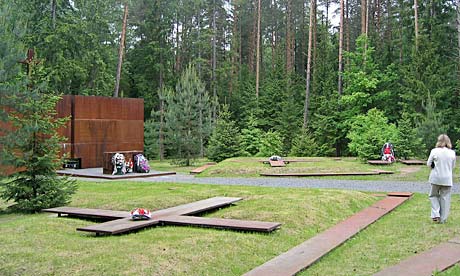Museum offers fascinating details of methods of the Stasi

It sounds like something straight out of a sinister novel or a spy film: a workplace where the state security is keeping tabs on everyone, where malign rumors are spread by those up above, and where anyone is in danger of being singled out for punishment.
Yet this is exactly the situation many employees faced when the Ministry for State Security (MfS) or Stasi was active in the former East Germany.
In a world of paranoia and mistrust, workers were considered a possible danger to the communist regime, especially after a workers’ uprising in 1953.
Fascinating details like these are described at a small state museum in Berlin titled Stasi: The Exhibition on the GDR Secret Police. Free to the public, the permanent exhibition in the former communist part of the city details methods, from the bizarre to the brutal, employed by the authorities to keep tabs on their own people.
It was said that the Stasi placed its own officials into companies and reported back to headquarters on activities.
“The MfS tried to sound out the workers’moods, monitor work discipline and find scapegoats when factories failed to achieve production targets,” one signboard at the museum notes
“The MfS would spy on anyone at work suspected of making comments that were critical of the regime. It also selectively spread misinformation to isolate ‘hostile negative elements’ from their colleagues.”
The tactic of isolating potentially threatening individuals by ruining their reputations was said to have become more widely used from the 1970s onwards as an alternative to the violence and arrests employed earlier. It was all about stifling dissent and freedom of thought.
“Friendships were destroyed and professional careers ruined without the victims even realizing why,” a notice says.
Many of these methods were employed well beyond the workplace.
Residents of East Germany, which lasted from 1949 to 1990, could not even escape Big Brother during their holidays.
Holidays were organized by the government, and citizens were largely restricted to travelling domestically or to other Eastern bloc countries.
Yet there were still concerns, the museum notes, that East Germans would have contact with Westerners and could possibly pick up dangerous ideas from them.
“For this reason the MfS ensured that all tourist traffic was monitored and kept under surveillance by the secret police,” a notice says.
Travel agencies were infiltrated with “officers on special assignments,” while tour guides acted as informants. Fellow state security officials helped keep tabs on travel groups visiting the other Eastern Bloc countries.
The Stasi also kept a close watch on sportsmen and women and was desperate to stop them from escaping to the West. As a deterrent, it would continue to “persecute” those competitors who sought asylum overseas. Security officials also worked to ensure that evidence of doping was not unearthed by the relevant sports authorities.
It seemed as though there was no area of life that was left alone by the MfS, with the arts another field that was closely monitored.
According to the museum, there were plenty of informants in the underground arts scenes, and some spheres of the arts world, among them rock bands, self-publishing and free-artist groups, were kept under particularly close watch.
The museum is run by the Federal Commissioner for the Records of the State Security Service of the former German Democratic Republic and is located at Zimmerstraße 90, 10117 Berlin.
The Stasi museum is not the only offbeat exhibition in the German capital. Just a short walk away is the Museum Haus am Checkpoint Charlie, which takes its name from the former border crossing and details the history of the Berlin Wall as well as discussing contemporary human rights and democracy issues.
Exhibits range from a video of the former American President Ronald Reagan giving his celebrated “Tear Down This Wall” speech in front of the Brandbenburg Gate to a Volkswagen Beetle adapted so that a person could fit into a concealed space and be smuggled into West Berlin.
Read more: http://blogs.praguepost.com/travel2/38104-big-brother-is-watching-you-in-communist-east-berlin#ixzz2y6pNpKGd

![[STALIN-SUB]](http://si.wsj.net/public/resources/images/WO-AD496_STALIN_DV_20101126202156.jpg)

